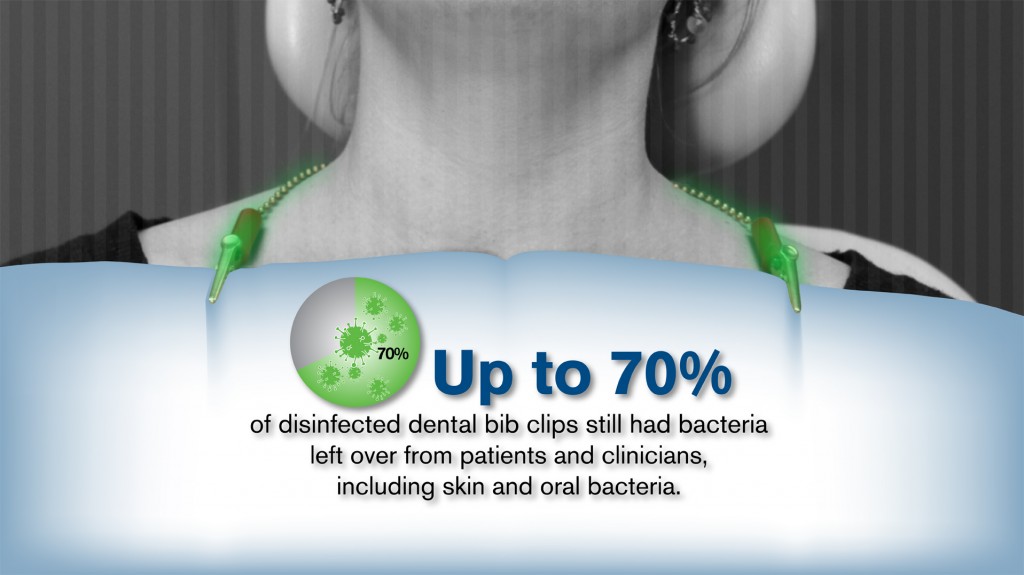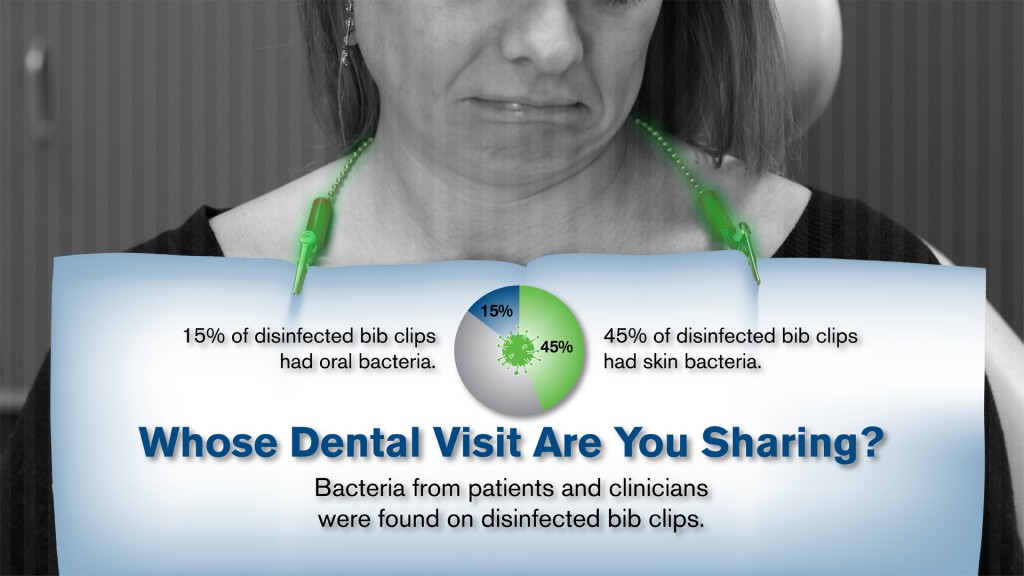Researchers at Tufts University School of Dental Medicine and the Forsyth Institute published a study on April 2, 2013, which showed that a significant proportion of dental bib clips harbored bacteria from the patient, dental clinician, and the environment after the clips had undergone standard disinfection procedures. A dental bib clip of course is that metallic chain that wraps around your neck and holds the dental bib that the dentist gives you when you see them.
The researchers found that the majority of thousands of bacteria found on bib clips were removed after the standard disinfection procedure. Even so, the researchers found that 40% of the bib clips after disinfection retained one or more aerobic bacteria which is able to grow and live in oxygenated environments. Furthermore, the researchers found that 70% of bib clips tested after disinfection retained one or more anaerobic bacteria.
The full study discussing the results is titled “Comprehensive Analysis of Aerobic and Anaerobic Bacteria Found on Dental Bib Clips at Hygiene Clinic” and will be published as a supplement to the April issue of Compendium of Continuing Education in Dentistry. It is currently available to view over at www.dentalbibclipbacteria.com along with two infographics which I have included below.
Recently several cases have surfaced where potential transmission of HIV or hepatitis has occurred between dental patients. See for example a recent case discussed in this blog post Dental Patients Warned of Possible HIV and Hepatitis Exposure Due to Oral Surgeon’s Practices. In this study where dental bibs were found to harbor bacteria no transmission was studied but it does suggest that even with standard disinfection procedures some bacteria may be present and may be able to transmit between patients.
In the study a total of 20 dental bib clips from patients were examined from patients treated in a dental hygiene clinic. Standard molecular identification techniques and a proprietary technology that can detect 300 of the most prevalent oral bacteria were used to analyze the sampled bacteria from the bib clips. Several results were found including that nine clips (45%) retained at least one anaerobic bacterial isolate from skin and three of the bib clips (15%) still had anaerobic Streptococcus bacteria from the oral cavity and upper respiratory tract.
Since cross contamination of bacteria from dental bibs between patients is an issue researchers suggest using disposable bib clips and/or fully sterilizing the bib clip between each patient. The researchers believe there are several potential hypothesis which can explain why the bib clips have some bacteria after disinfection. This includes the patient potentially touching the bib clip and transmitting bacteria to it and the dentist touching the bib clip and transmitting bacteria from their gloves before or after dental treatment.
Other studies in recent years have also shown that dental bib clips still harbor aerobic bacterial contaminants even after proper disinfection procedures. Several tips to minimize bacteria and infection while undergoing dental treatment is provided by the researchers. This includes making sure you don’t touch the dental bib clip, requesting a disposable dental bib clip, making sure the clinician has fully sterilized the dental bib clip if a disposable bib clip is not available, and making sure you wash your hands thoroughly before leaving the dental office.
The researchers also recommend watching your dentist to make sure he/she is wearing gloves and using sterilized instruments. Although I am not sure how effective these pointers will be it may in some instances be helpful.



If you touch anything and THEN touch the bib clip, even with gloves on, you could potentially transfer bacteria to it. That’s why it’s so important to establish a routine for every appointment that minimizes the potential for cross contamination.
Wow, 70% is a huge number! Thanks for sharing this information.
-Gasper
I simply couldn’t leave your website before suggesting
that I extremely enjoyed the standard info a person provide to your visitors?
Is going to be again often to inspect new posts